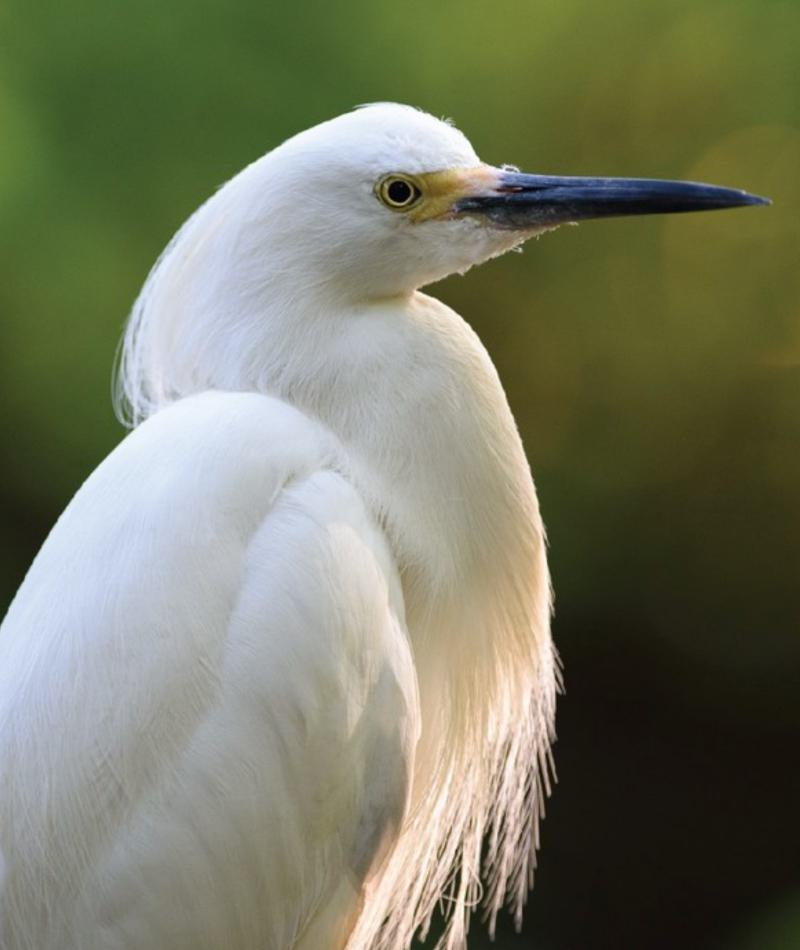
Snowy Egret
Egretta thula
Did you know?
- Its favorite foods include crustaceans, insects and fish.
- They sometimes will follow cattle to catch insects.
- A female lays three to five eggs at a time.
- Both parents feed the young, and chicks leave the nest 20 to 25 days after hatching.
- It can be found in colonies with other species of wading birds.
Shallow Shufflers
Snowy egrets have a habit of scraping their feet in shallow water to stir up food. They also use a clever method to help spot fish under the surface: they spread out one wing to cast a shadow on the water, reducing glare.
Comeback Kids
Snowy egrets sport extra-long silky feathers on their back during courtship. It's these feathers that were nearly the species' downfall. In the 19th and early 20th centuries, women's hats featuring feathers became the rage. Millions of birds were killed for their beautiful plumage. As soon as they gained legal protection, they began a comeback.
Threat Level
- Unknown
- Common
- Near Threatened
- Threatened
- Endangered
- Critically Endangered
- Extinct in the Wild
Common
The Snowy Egret is widespread and abundant.
Range
North America, West Indies, South America
Habitat
Marshes, lakes, swamps, ponds, lagoons, mangroves

We care about snowy egrets
The Saint Louis Zoo supports snowy egrets at the 1904 Flight Cage.
Find this animal in Historic Hill

SAINT LOUIS ZOO ZONE
Historic Hill
Historic Hill is a lovely stroll through one of the oldest parts of the Saint Louis Zoo. From the 1904 World’s Fair Flight Cage to the Spanish architectural flavor of the 1920s in the Bird House, Primate House and Herpetarium to the finishing touches of our thoroughly modern exhibits, this area of the Zoo has a unique ambiance and a nostalgic history that make it a great destination.

